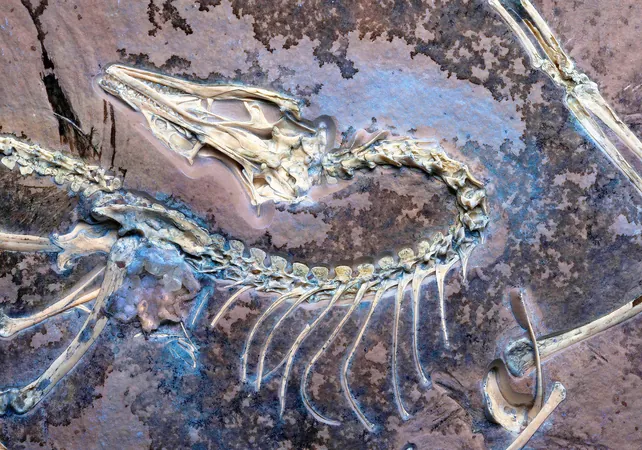
Amazing New Archaeopteryx Fossil Challenges Everything We Knew About Bird Evolution!
2025-05-23
Author: Yan
A Groundbreaking Discovery
The Archaeopteryx fossil, famously known for bridging the gap between dinosaurs and modern birds, has once again proven its significance with a recent find in Chicago. This magnificent fossil, often regarded as the one that validated Darwin's theories, has captivated scientists for over 160 years and continues to shed light on the evolution of flight.
Unveiling the ‘Chicago Archaeopteryx’
Researchers at the Field Museum have unveiled what could be the most informative Archaeopteryx fossil yet, dubbed the "Chicago Archaeopteryx." Published in the journal Nature, this exceptional specimen has provided crucial insights, thanks to advanced preservation techniques.
The Smallest Specimen Yet!
This particular archaeopteryx, only about the size of a pigeon, was discovered in the renowned Solnhofen limestone of Germany. Long in private possession, it finally made its way to the Field Museum in 2022 through the efforts of fossil enthusiasts.
A Year of Preparation
The painstaking preparation of the fossil took over a year, with scientists utilizing UV light and CT scans to prevent damage to its delicate soft tissues and ensure a thorough understanding of its structure. "CT scanning was essential; it allowed us to know precisely where to avoid damaging the bones," explained Jingmai O’Connor, the lead researcher.
Unlocking Secrets of Evolution
This specimen has revealed unprecedented details about Archaeopteryx's anatomy, including its skull and wings. Significantly, findings about the bones in its mouth offer insights into cranial kinesis, a feature in modern birds that allows their beaks to move independently from their skulls. This evolutionary trait may have played a role in the diverse ecological niches birds occupy today.
How Flight Evolved: The Big Question
One of the most hotly debated topics in paleontology is how flight evolved among dinosaurs, and Archaeopteryx may hold the answers. O’Connor shared that the fossil may be the earliest documented dinosaur capable of flight, thanks to specific features like its long upper arm feathers.
Differentiating Features: A New Perspective
The Chicago specimen has provided newly visible long tertial feathers, hints that this creature was indeed capable of flight—an ability not seen in its non-avian relatives. These crucial adaptations further suggest that the evolution of flight among dinosaurs may have occurred more than once!
The Journey Continues
With this discovery, scientists are just scratching the surface of what the Chicago Archaeopteryx has to offer. "This is only the beginning; every part of its body reveals something new!" O’Connor emphasized. After 160 years, Archaeopteryx continues to surprise, showcasing the wonders of evolution and the relentless pursuit of knowledge in the scientific world.
Conclusion: An Iconic Legacy
As the study was revealed in Nature, it’s clear that Archaeopteryx still has invaluable lessons waiting to be uncovered. This remarkable fossil not only celebrates the legacy of Darwin but also invites us to reimagine the history of avian evolution!


 Brasil (PT)
Brasil (PT)
 Canada (EN)
Canada (EN)
 Chile (ES)
Chile (ES)
 Česko (CS)
Česko (CS)
 대한민국 (KO)
대한민국 (KO)
 España (ES)
España (ES)
 France (FR)
France (FR)
 Hong Kong (EN)
Hong Kong (EN)
 Italia (IT)
Italia (IT)
 日本 (JA)
日本 (JA)
 Magyarország (HU)
Magyarország (HU)
 Norge (NO)
Norge (NO)
 Polska (PL)
Polska (PL)
 Schweiz (DE)
Schweiz (DE)
 Singapore (EN)
Singapore (EN)
 Sverige (SV)
Sverige (SV)
 Suomi (FI)
Suomi (FI)
 Türkiye (TR)
Türkiye (TR)
 الإمارات العربية المتحدة (AR)
الإمارات العربية المتحدة (AR)